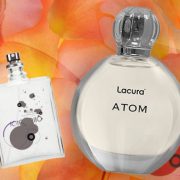
In a world overflowing with choices and the allure of ever-changing trends, the quest for the perfect product can feel akin to navigating a maze. With an overwhelming array of options at our fingertips—from the latest gadgets to everyday essentials—how do we ensure that quality stands at the forefront of our shopping escapades? “Mastering Your Shopping Quest: Key Tips to Prioritize Product Quality” aims to illuminate the path toward informed purchasing decisions. By embracing a mindful approach, shoppers can transcend the shiny advertisements and fleeting fads, uncovering treasures that promise durability and satisfaction. Join us as we explore essential strategies to elevate your shopping experience and make discerning selections that truly meet your needs, ensuring that every purchase is a step towards a richer, more fulfilling lifestyle.
Understanding Quality Indicators for Essential Purchases
When embarking on your shopping journey, the quality of essential items is paramount. Understanding the various **quality indicators** can help streamline your purchases, ensuring that you receive both value and satisfaction. One crucial aspect to consider is the **product’s materials**. Examine whether the materials are durable, eco-friendly, or meet certain safety standards. You should also look for any **certifications** that indicate a reliable production process, such as organic or fair-trade certifications. The reputation of the brand can also provide insight into their commitment to quality; established brands often have a track record of producing consistent products.
Beyond the materials and brand reputation, it is essential to evaluate the **performance and functionality** of the item. Checking customer reviews can give you a real-world perspective on how the product performs over time. Additionally, consider warranty options or guarantees as they often serve as a promise of quality from the manufacturer. To facilitate your decision-making process, here’s a simple table summarizing essential quality indicators:
| Quality Indicator | Importance |
|---|---|
| Materials Used | Durability & Longevity |
| Brand Reputation | Trust & Reliability |
| Certifications | Safety & Standards Compliance |
| Customer Reviews | Real-World Performance |
| Warranty | Manufacturer’s Confidence |
Strategies to Evaluate Product Durability and Performance
When evaluating a product’s durability and performance, it’s essential to gather as much information as possible before making a purchase. **Research reviews and ratings** across multiple platforms to understand the experiences of other customers. Often, insights from real users can reveal long-term performance that promotional descriptions overlook. Additionally, consider checking for **warranty information** and **replacement policies**, as these often indicate the manufacturer’s confidence in their product’s durability. Take advantage of forums and community discussions to uncover hidden issues, as they may illuminate concerns that aren’t covered by traditional reviews.
Another effective strategy is to assess the product’s materials and construction. Products made from **high-quality materials** usually offer better longevity and performance. Look for identifiers of craftsmanship, such as reinforced stitching in textiles or solid metal components in electronics. You can create a comparison table to help visualize the differences between similar products based on their features and materials:
| Product | Material | Warranty | User Rating |
|---|---|---|---|
| Product A | Stainless Steel | 2 Years | 4.5/5 |
| Product B | Plastic | 1 Year | 3.8/5 |
| Product C | Aluminum | 3 Years | 4.7/5 |
By actively engaging with product comparisons and maintaining a critical eye on quality indicators, you can make informed decisions that enhance the value of your investments. A combination of diligent research and practical observations about materials and warranties often leads to better choices that stand the test of time.
To Conclude
As we conclude our exploration of mastering your shopping quest, it’s essential to remember that prioritizing product quality doesn’t have to be an overwhelming endeavor. Armed with the insights and tips outlined in this article, you’re now equipped to navigate the aisles—or the digital landscapes—with a discerning eye, ensuring that every purchase you make is a step towards a more fulfilling and sustainable shopping experience.
Embrace the journey with confidence; after all, each thoughtful choice helps cultivate a marketplace that values quality over quantity. So next time you find yourself standing before a myriad of options, take a moment to reflect on what truly matters. Quality products not only enhance your life but also contribute to a healthier planet and a more ethical economy. Happy shopping, and may your future quests lead you to treasures that inspire, delight, and endure.
















